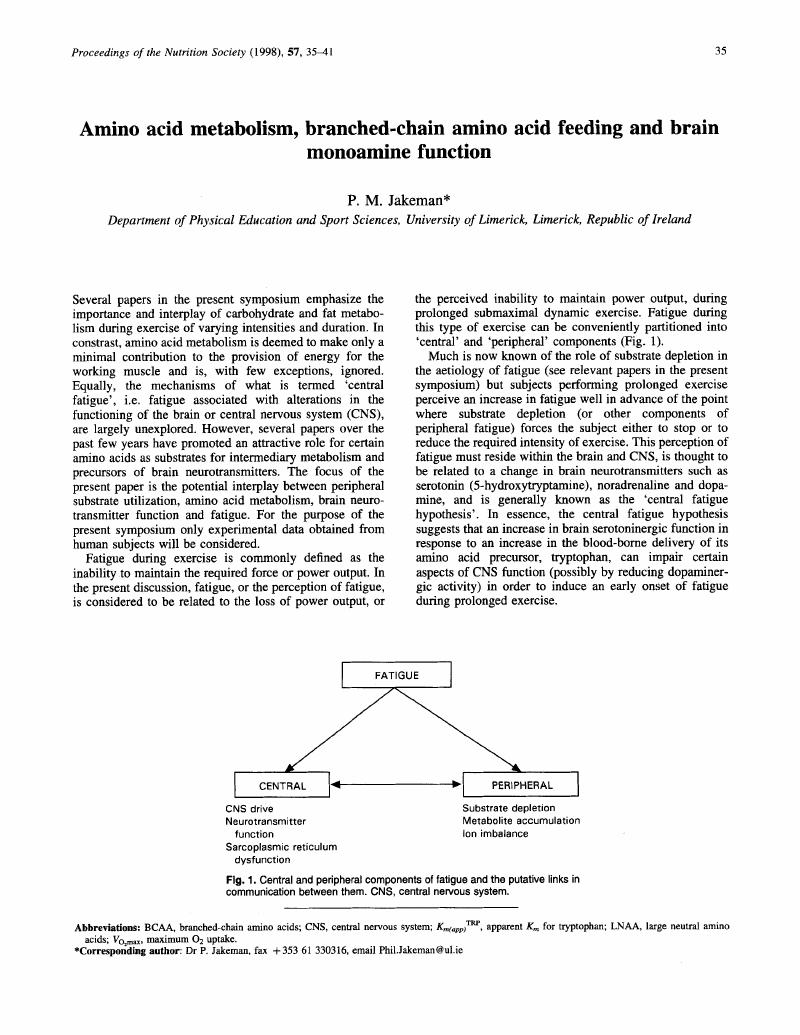Crossref Citations
This article has been cited by the following publications. This list is generated based on data provided by Crossref.
Bailey, Damian M.
Davies, Bruce
Castell, Linda M.
Newsholme, Eric A.
and
Calam, John
2001.
Physical exercise and normobaric hypoxia: independent modulators of peripheral cholecystokinin metabolism in man.
Journal of Applied Physiology,
Vol. 90,
Issue. 1,
p.
105.
Béquet, F.
Gomez‐Merino, D.
Berthelot, M.
and
Guezennec, C. Y.
2002.
Evidence that brain glucose availability influences exercise‐enhanced extracellular 5‐HT level in hippocampus: a microdialysis study in exercising rats.
Acta Physiologica Scandinavica,
Vol. 176,
Issue. 1,
p.
65.
Soengas, José L.
and
Aldegunde, Manuel
2002.
Energy metabolism of fish brain.
Comparative Biochemistry and Physiology Part B: Biochemistry and Molecular Biology,
Vol. 131,
Issue. 3,
p.
271.
Rossi, Luciana
and
Tirapegui, Julio
2004.
Implicações do sistema serotoninérgico no exercício físico.
Arquivos Brasileiros de Endocrinologia & Metabologia,
Vol. 48,
Issue. 2,
p.
227.
Kurbat, M. N.
and
Lelevich, V. V.
2009.
Metabolism of amino acids in the brain.
Neurochemical Journal,
Vol. 3,
Issue. 1,
p.
23.
Stepto, Nigel K.
Shipperd, Benjamin B.
Hyman, Graeme
McInerney, Bernie
and
Pyne, David B.
2011.
Effects of high-dose large neutral amino acid supplementation on exercise, motor skill, and mental performance in Australian Rules Football players.
Applied Physiology, Nutrition, and Metabolism,
Vol. 36,
Issue. 5,
p.
671.
Sánchez, Cristina L.
Van Swearingen, Amanda E. D.
Arrant, Andrew E.
Kuhn, Cynthia M.
and
Zepf, Florian D.
2014.
Dietary manipulation of serotonergic and dopaminergic function in C57BL/6J mice with amino acid depletion mixtures.
Journal of Neural Transmission,
Vol. 121,
Issue. 2,
p.
153.
Usuda, Kento
Kawase, Takahiro
Shigeno, Yuko
Fukuzawa, Susumu
Fujii, Kazuki
Zhang, Haolin
Tsukahara, Takamitsu
Tomonaga, Shozo
Watanabe, Gen
Jin, Wanzhu
and
Nagaoka, Kentaro
2018.
Hippocampal metabolism of amino acids by L-amino acid oxidase is involved in fear learning and memory.
Scientific Reports,
Vol. 8,
Issue. 1,
Xin, Yu
Guan, Shu-Ting
Ren, Ke
Wang, Hui
Dong, Ji
Wang, Hao-Yu
Zhang, Jing
Xu, Xin-Ping
Yao, Bin-Wei
Zhao, Li
Shi, Chang-Xiu
and
Peng, Rui-Yun
2024.
Microwave Radiation Caused Dynamic Metabolic Fluctuations in the Mammalian Hippocampus.
Metabolites,
Vol. 14,
Issue. 7,
p.
354.



